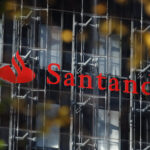
UBS Falls to Santander: A Deep Dive into the Changing European Banking Landscape
Tháng 4 17, 2025Trump vs. Powell: Navigating the Turbulent Waters of Federal Reserve Policy
Tháng 4 17, 2025ECB’s Anticipated Interest Rate Cut: Understanding the Impacts and Implications
On April 17, 2025, the European Central Bank (ECB) is poised to implement its sixth consecutive interest rate cut, reducing the deposit facility rate from 2.5% to 2.25%. This strategic move is part of the ECB’s ongoing efforts to adapt to a complex economic environment characterized by easing inflation rates and heightened economic uncertainty stemming from global trade tensions, prominently influenced by US tariffs which significantly affect eurozone growth. As noted in a recent analysis of the trade environment, these tariffs have broader implications on international economic stability, reinforcing the challenges the eurozone faces (see more here: China’s President Xi Jinping convened global CEOs).
Key Drivers for the Rate Cut
Trade Uncertainty and Economic Growth
At the forefront of the ECB’s decision-making is the escalating uncertainty surrounding EU-US trade relations. The introduction of new tariffs by the United States poses serious risks to eurozone economic performance, given that the US remains a pivotal export market. A decline in international trade flows resulting from these tariffs could catalyze slowing growth and further pressures on inflation metrics.
Easing Inflation Trends
Inflationary pressures within the eurozone have notably softened, with the latest figures showing headline inflation at 2.2% year-on-year in March 2025, a slight decrease from 2.3% in February. Core inflation has also experienced a decline to 2.4%, underpinned primarily by lower energy prices and a stronger euro. This clear downtrend in inflation indicates an environment where consumer price increases are not only manageable but also warrant a more cautious monetary strategy moving forward. In the context of current trends in the EUR/USD currency pair, there is a growing bullish momentum amid these consolidating market conditions (read more insights here: Forex Analysis: Identifying the Bullish Momentum).
Eurozone Economic Outlook and Challenges
While reduced energy costs present opportunities for growth, other factors such as stagnating wage increases and moderating service price inflation introduce new challenges. These elements significantly limit inflation expectations, ultimately influencing the ECB’s approach to future monetary policy adjustments.
ECB’s Policy Approach and Market Expectations
The ECB is projecting a flexible and data-driven policy stance moving ahead, indicating a commitment to reassessing economic conditions with each meeting. Market analysts predict that if current downward risks persist, the ECB may engage in at least two additional rate cuts in 2025, with the deposit facility rate potentially dipping below 1.5% by year-end.
In light of these expectations, ECB President Christine Lagarde’s upcoming press conference will be closely monitored not only for insights regarding the central bank’s restrictive language concerning future rate paths, but also on how the trade tariff landscape is influencing growth and inflation dynamics.
Governing Council Dynamics and Diverging Opinions
Within the ECB Governing Council, perspectives on the speed and extent of rate cuts are not uniform. Some council members advocate for aggressive rate cuts due to signs of trade-induced economic slowdown and disinflation. Conversely, others maintain a more cautious approach, awaiting concrete economic data before reconsidering current policy settings. This divergence highlights the ongoing tension between the need for immediate action and a measured response to unfolding economic indicators.
Market Impact and Currency Expectations
Recent trends indicate that the euro has strengthened significantly against the US dollar, attributed largely to growing anticipations of ECB easing juxtaposed with broader US economic concerns. Investors will be keen to decipher signals from the ECB regarding the planned pace of future rate cuts.
If the ECB demonstrates confidence in navigating the current disinflationary climate, it may bolster expectations for continued easing, potentially exerting downward pressure on the euro. However, any inclination towards a more cautious approach regarding rate cuts could conversely provide support for the euro amidst ongoing market volatility.
Ultimately, the nuanced and proactive stance of the ECB in the face of subdued inflation and external trade uncertainties illustrates a careful balance being struck to foster economic stability in the eurozone while navigating the complexities of global trade dynamics.
